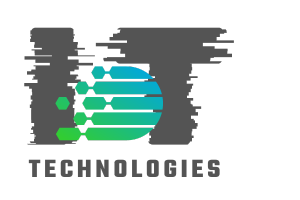
How to Reduce Water Usage in Landscaping with Tech-Savvy Solutions
Share
In today's world, where technology is intertwined with every aspect of our lives, even our gardens and landscapes can benefit from a high-tech touch. The need to reduce water usage in landscaping has never been more pressing, especially as water resources become increasingly scarce. For tech professionals and enthusiasts, this is an opportunity to leverage technology to create sustainable and efficient landscaping solutions.

Why Reducing Water Usage in Landscaping Matters
Landscaping is more than just an aesthetic endeavor; it plays a crucial role in our ecosystem. However, traditional landscaping practices often lead to excessive water consumption. With the global push towards sustainability, reducing water usage in landscaping is not only environmentally responsible but also economically wise. By adopting innovative solutions, we can maintain beautiful landscapes while conserving our precious water resources.
Smart Irrigation Systems: A Game Changer
One of the most effective ways to reduce water usage in landscaping is through smart irrigation systems. These systems use advanced technology such as IoT (Internet of Things) devices, weather data, and soil moisture sensors to optimize water delivery. Smart irrigation systems ensure that plants receive just the right amount of water, reducing waste and promoting healthier growth.
For instance, smart sprinklers can be programmed to water gardens at specific times, taking into account weather forecasts and soil conditions. This prevents overwatering and ensures that water is used efficiently. Tech professionals can explore the integration of these systems into their landscapes to achieve significant water savings.
Incorporating Water-Saving Technologies
Beyond irrigation, there are various other technologies that can help in reducing water usage. Drip irrigation, for example, delivers water directly to the roots of plants, minimizing evaporation and runoff. This method is especially beneficial in dry climates or areas with water restrictions.
Additionally, rainwater harvesting systems can be integrated into landscaping designs. These systems collect rainwater from roofs and other surfaces, storing it for later use in irrigation. By utilizing rainwater, we can further reduce reliance on municipal water supplies and enhance sustainability.
The Role of IoT in Water Management
The Internet of Things (IoT) plays a pivotal role in modern water management. IoT devices can monitor soil moisture levels, weather patterns, and water usage in real-time. This data-driven approach allows for precise control over water resources, minimizing waste and optimizing efficiency.
For tech enthusiasts, IoT offers an exciting opportunity to innovate and experiment with new solutions. By integrating IoT sensors and devices into landscaping projects, professionals can create smart ecosystems that are both beautiful and water-efficient. To learn more about the role of IoT in water management, check out this insightful article.
Eco-Friendly Landscaping Practices
In addition to technology, adopting eco-friendly landscaping practices is essential for water conservation. Choosing native plants that are adapted to the local climate reduces the need for excessive watering. Xeriscaping, a landscaping method that uses drought-resistant plants, is another effective strategy for reducing water consumption.
Furthermore, incorporating mulch into garden beds helps retain soil moisture and reduces evaporation. This simple yet effective technique can significantly cut down on water usage while promoting healthy plant growth.
Integrating Technology and Nature for Sustainability
For tech professionals, the challenge lies in seamlessly integrating technology with nature to create sustainable landscapes. By leveraging smart irrigation systems, IoT devices, and eco-friendly practices, we can achieve a harmonious balance between modern technology and the natural world.
Additionally, staying informed about the latest innovations in water management can provide valuable insights and inspiration. Explore more about future innovations in water management to stay ahead of the curve.
Conclusion: A Call to Action
Reducing water usage in landscaping is not just a trend; it's a necessity. As tech professionals and enthusiasts, we have the power to drive change and set new standards for sustainability. By embracing technology and adopting eco-friendly practices, we can create landscapes that are both beautiful and environmentally responsible.
For more tips on water conservation at home, visit this comprehensive guide.

FAQ Section
What are the benefits of smart irrigation systems?
Smart irrigation systems optimize water usage by using data-driven techniques, leading to significant water savings and healthier plants.
How can IoT help in reducing water usage?
IoT devices provide real-time data on soil moisture and weather conditions, allowing for precise water management and reduced waste.
What is xeriscaping?
Xeriscaping is a landscaping method that uses drought-resistant plants to minimize water usage while maintaining aesthetic appeal.
